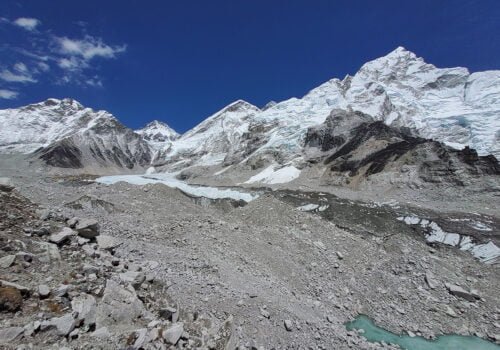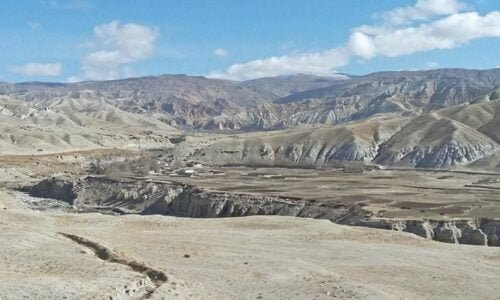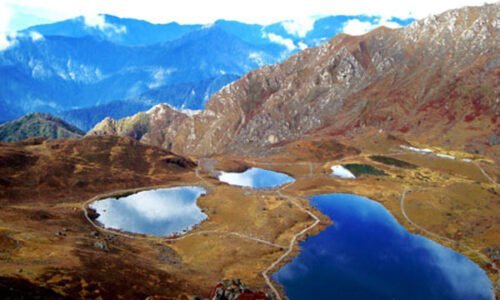Electronic Tracking Chips Compulsory for Everest Climbers
12 Mar 2024 4 min to read

Outdoor Himalayan Treks present an article on ‘Electronic Tracking Chips Compulsory for Everest Climbers’. Ascending the world’s highest Mt. Everest once in a lifetime is a dream for many enthusiast mountaineers. Everest climbing is challenging yet full of adventure and demands top-notch physical and mental fitness, high endurance, and strong determination. Conquering Everest is a huge achievement but the death toll during the Everest Summit also can’t be ignored.
According to the joint statistics of the Nepal government and the Himalayan Database, the total summits from Nepal and China have reached nearly 12,000. From the Nepal side only, there have been 8,270 summit ascents since 1953. The death toll has reached over 330 which is a misfortune and alarming.
As to the statistics of last year’s spring climbing season in Nepal, the fatalities claimed to be 17 out of which 6 bodies are yet to be discovered. Most bodies are buried under the snow and it is difficult to trace their bodies as there is no proper means such as tracking devices on their bodies to track them quickly. Spring climbing season in Nepal starts in early April the second week of May is the beginning of the two-week summit window for mountaineering.

In response to the high rise of fatalities on Everest, the Nepal government has made Electronic Tracking Chips Compulsory for Everest Climbers. Certainly, it is the best move that allows swift search and rescue operations in case of such casualties. The new mandatory rule to strap with an electronic tracking chip or a GPS device was passed on February 27, 2024. From this year’s spring climbing season, this new rule is made compulsory with a joint discussion with expedition operators and the Nepal Mountaineering Association as stated by the director of the Department of Tourism.
The new rule states that the expedition organizers should arrange the devices for their climbers and guides. The electronic tracking chip is not as costly as it may cost between USD 10-15 per piece. The main aim of this device is to facilitate quick search and rescue operations. Yet, the device types have not been specified but the criteria is a product must be certified and match international standards.
Avalanches in Everest are more common and this tracking device can save many lives as it eases in quick search and rescue operations. Immediate search and rescue action taken at the time of the accident can also minimize the search and rescue time. There is also a high chance of a decline in fatalities with the use of tracking devices as it tracks quickly the exact location of the missing people. It will directly help in the quick rescue who are in pain or imminent danger due to which their lives can be saved in time.

Electronic tracking chips will have two components: a reflector and a deflector. A reflector used by climbers is a small and lightweight band-aid-sized electronic transponder that is strapped to clothing, helmets, gear, and boots. Mountain rescue teams use the detector which has a range of over 200 meters. The device is a battery-free transponder that responds to the frequency signals of the reflector. Upon encountering signals from the reflector, the detector bounces back to it and allows rescuers to trace the reflector’s location wearing them.
Retrieving the dead body at such an altitude on Everest is a very challenging task. Especially, it is a Herculean task to recover dead bodies in the Death Zone due to the threat of the obscure atmosphere. The oxygen pressure is inadequate to support human life for an extended period in the Death Zone as the altitude there is beyond a certain threshold. Also, it is very costly to recover buried under the thick snow of an avalanche which may cost between USD 20,000 to 200,000. Due to difficulties and cost factors, most of the climbers’ bodies are abandoned.
With the introduction of new rules to use electronic tracking chips, we can hope for the swift search of the climbers who are in danger and rescue them promptly to minimize the fatalities. We insist on Electronic Tracking Chips Compulsory not only for Everest Climbers but for all-mountain and peak climbers all over Nepal. As of now, ‘Electronic Tracking Chips Compulsory for Everest Climbers’ is set to be in action this Spring climbing season of 2024.





